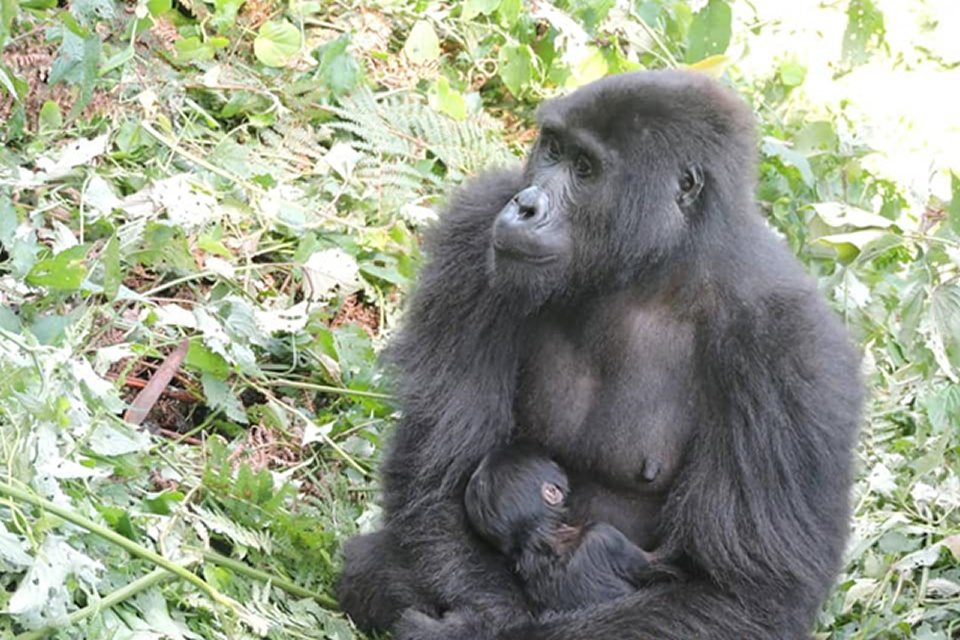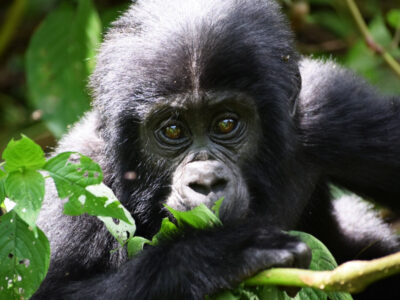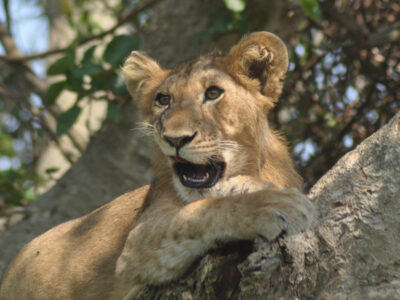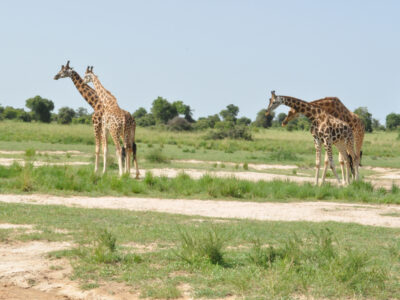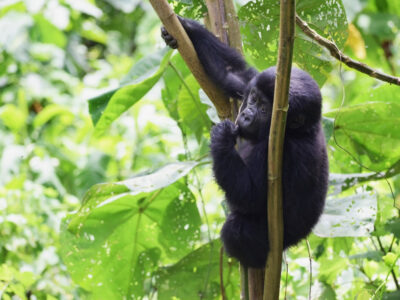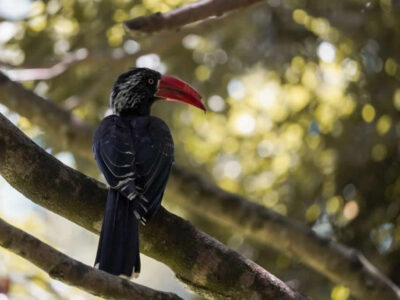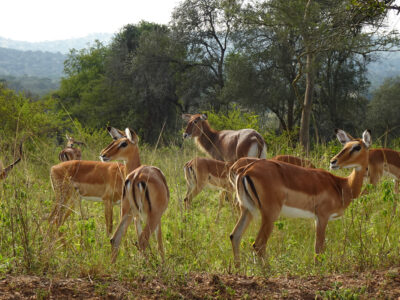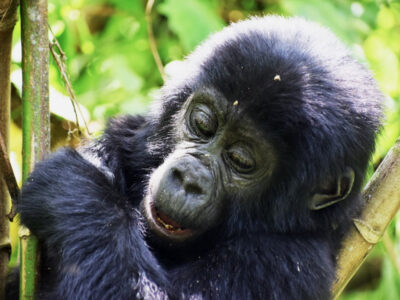The Uganda Wildlife Authority the body that manages Uganda national parks and conservation areas last week confirmed the birth of a baby mountain gorilla in Bwindi impenetrable national park in the Rushaga sector, this has increased the number of individuals in the Nshongi gorilla family from 12 to 13. The mother of the new baby (Kebirungi) and the father (Bweza) were seen with their baby in a good health condition. The adult female gorilla (kebirungi) of the Nshongi family was seen with her newborn baby on May 9, 2022. This has increased the number of mountain gorillas in Uganda and as a result, it can elevate gorilla tracking in Bwindi national park as far as tourism in Uganda Is concerned.
The Bwindi impenetrable national park is found in the southwestern part of Uganda, it’s under the world heritage site and is the habitat of more than half of the world’s population of mountain gorillas, and actually, over 400 mountain gorillas live in Bwindi impenetrable forest. In addition to the endangered impressive mountain gorillas, there are other wildlife attractions such as 346 species of birds, 120 animal species, more than 200 species of butterflies, and 324 tree species of which 10 species are endemic to this forest in the whole of Uganda. The park is established on 321 s.km and it borders Virunga national park in D R Congo and in the Albertine rift valley edge.
The main tourist attraction in Bwindi national park is gorilla tracking together with gorilla habituation, it generates much revenue for Uganda Wildlife Authority and boosts the development of Bwindi national park and the surrounding community. Tourists wishing to track gorillas are advised to first obtain a gorilla permit early enough to avoid disappointment. There are only three countries in Africa where endangered mountain gorillas can be visited that is Uganda (Bwindi impenetrable national park and Mgahinga national park), Rwanda (volcanoes national park), and DR Congo (Virunga national park)
There are more than 30 gorilla families in Bwindi national park that are ready for tracking and over 13 habituated families such as Mubare Gorilla Family – Buhoma, Habinyanja Gorilla Family – Buhoma (Bwindi), Rushegura Gorilla Family – Buhoma, Bitukura Gorilla Family- Ruhija, Oruzogo Gorilla Family – Ruhija, Nkuringo Gorilla Family – Nkuringo, Nshongi Gorilla Family – Rushaga, Mishaya Gorilla Family – Rushaga, Kahungye Gorilla Family – Rushaga, Bweza Gorilla Family- Rushaga, Busingye Gorilla Family – Rushaga, Kyaguriro Gorilla Family – Ruhija, and many others.
The above-selected gorilla families have been habituated to human appearance, and the number of visitors attending is tightly managed to prevent gorilla threats and debasement of the natural habitats. Mountain gorillas hardly misbehave with visitors and there are rules put in place for visitors to minimize threats to mountain gorillas such threats include the risk of obtaining diseases from the visitors, to scare them away, and others.
Below are some of the rules guided for all visitors carrying out gorilla trekking and habituation experience.
- Sick and unhealthy visitors are prohibited from gorilla tracking since humans share 98% of the DNA with gorillas, and the possibility of acquiring diseases from visitors is very high.
- Do not eat, smoke, or even drink when you are near the gorillas. Eating or drinking unavoidable will lead to food droplets falling, which may increase the risk of transmission of diseases.
- Always keep your voices down at all times, this may scare gorillas away. Although, it is okay to ask the guide questions and follow their instructions during your stay with the gorillas.
- When gorillas charge, don’t panic and run instead cringe slowly and wait for the gorilla to pass, it won’t cause any harm to you.
- Keep a distance of about 7meters when taking pictures and videos and avoid flash cameras, this can scare away the gorillas or make them react harshly.
- Do not touch the gorillas and avoid eye contact with them. Instead, just observe from a fair distance of 7-10 meters since they are wild animals, you are not used to them and their behaviors.
- Do not litter in the park, keep your rubbish with you until you vacate the place or put them in the dustbins placed around the area. This may lead to animals and primates swallowing them and developing complications and illnesses. In case you want to ease yourself, alert your guide to help you dig a hole to use and after cover it to avoid disease transmission.
Therefore in order to enjoy the blissful gorilla tracking experience, there are some essentials you need to carry with you such as long pants and shirts since you are dealing in thick forests with sharp trees and grasses that could injure your body, good hiking shoes that should be able to penetrate through steep slopes and muddy areas, carry binoculars for better viewing of birds and primates, move with an insect repellant to keep you from insect bites, a camera for pictures and videos for your memory review and don’t forget to pack enough drinking water and food.
Note: Gorilla permits in Uganda cost 700$, in Rwanda cost 1500$, and in D R Congo cost 450$ and various tour companies are able to secure gorilla tracking permits for expected visitors to gorilla destinations.

